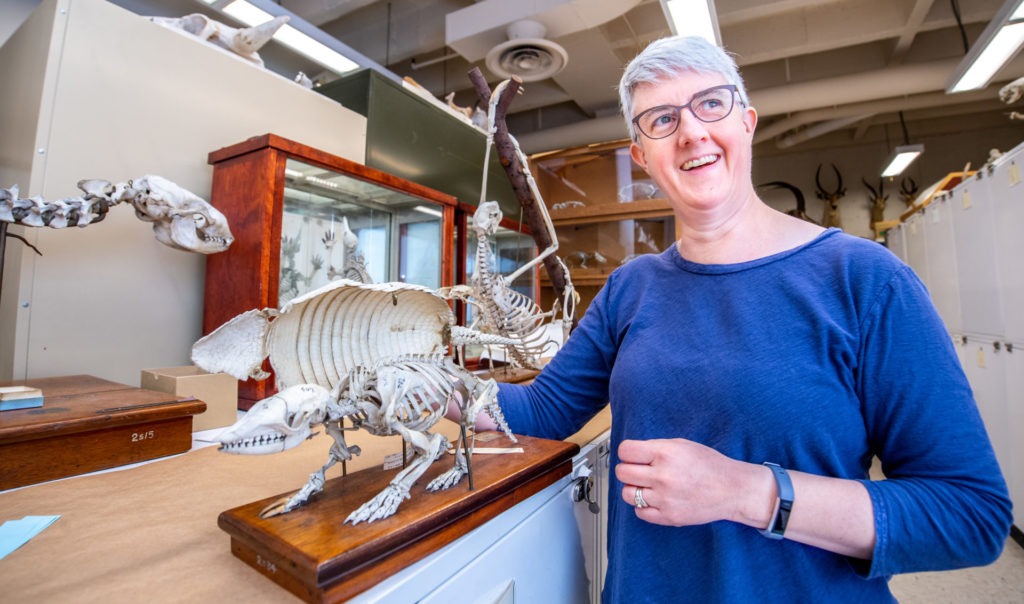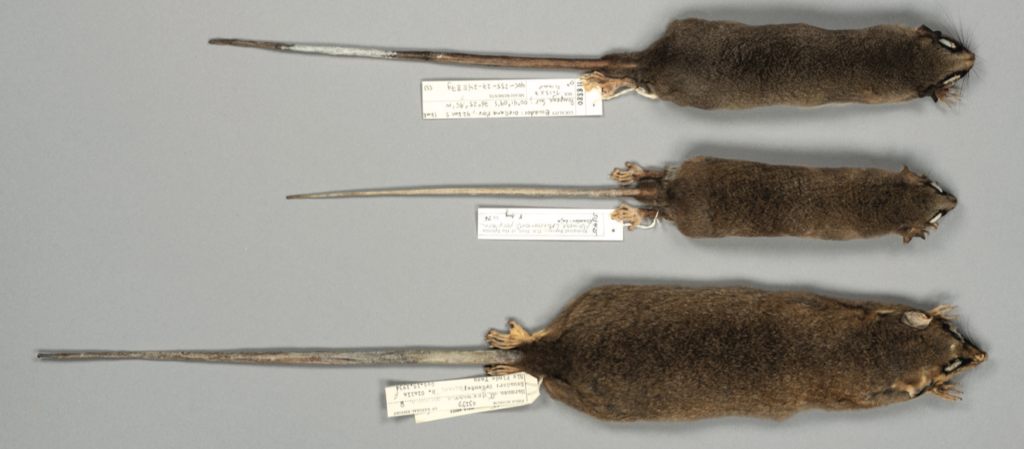
Marmosa jansae, that rings a bell?
A new mouse opossum species named after the Bell’s curator of mammals Sharon Jansa
Published06/24/2021 , by Emily Dzieweczynski
Marmosa jansae—if that sounds familiar, it’s not because it’s a well known species—instead, it’s a new species of mouse opossum named after the Bell Museum’s curator of mammals Sharon Jansa! In a recent paper by Rob Voss and Tom Giarla, titled, “A revision of the didelphid marsupial genus Marmosa. Part 3, A new species from western Amazonia, with redescriptions of M. perplexa Anthony, 1922, and M. germana Thomas, 1904,” the researchers identify a new species of mouse opossum and use the opportunity to recognize Sharon’s role in this research .
Sharon first learned of the honor after receiving an email on the day the paper was published, which happened to be April Fool’s Day (Coincidence? We think not.), with the paper attached. After the initial surprise, she recalled feeling incredibly honored, as the paper was authored by two of the scientists she admires most.

Sharon Jansa, curator of mammals

Having a new species named after you is quite the honor—but this honor is the result of decades of work and dedication. Sharon first started working with Rob, the curator of mammals at the American Natural History Museum, roughly 20 years ago when they launched an initiative to understand opossum diversity and evolutionary history. This was no small endeavour, as there are over 100 known opossum species throughout North and South America—many that look extremely similar. Additionally, classifying and documenting new species of opossum requires a high standard for evidence. The species must be genetically and morphologically distinct, and this must be demonstrated using multiple types of data. Sharon and Rob turned out to be the perfect people for the job. With Rob possessing a keen eye for morphometrics and Sharon with an expertise in genetics, they offered the combined knowledge and compatible skill sets to take on this unique challenge. In fact, they recently published a book on this research.
Tom, on the other hand, is a tenured professor at Siena College in upstate New York where he teaches biology, but Sharon and him go way back, too. Tom recalls the great interpersonal connection that developed on a frigid January day in 2007, when he met Sharon during his search for doctoral programs. Soon, he became one of Sharon’s first graduate students at the University of Minnesota. Tom explained that Sharon offered him, along with many other students, a dedicated and caring mentorship that inspired them as young mammalogists.

Marmosa jansae, M. perplexa, and M. germana
Sharon also hopes that there are more dedicated and curious individuals who want to take this research further. She hopes to encourage more young mammalogists who want to develop the expertises, keen eyes, and curious minds that will make the next strides in mammalian discoveries. Tom shared that one of the most important things for him as a budding mammalogist was having access to museum collections.
If you’re considering a career in mammalogy, you may be interested in reading more about Sharon’s lab. If you want to read more about the research that Sharon, Rob, Tom and others have done on opossums, you can read the recently published book or the study mentioned in this article.
Congratulations, Rob and Tom, on the incredible discovery of a new mouse opossum species, and to Sharon for receiving this honor! We hope that you can one day meet Marmosa jansae!


